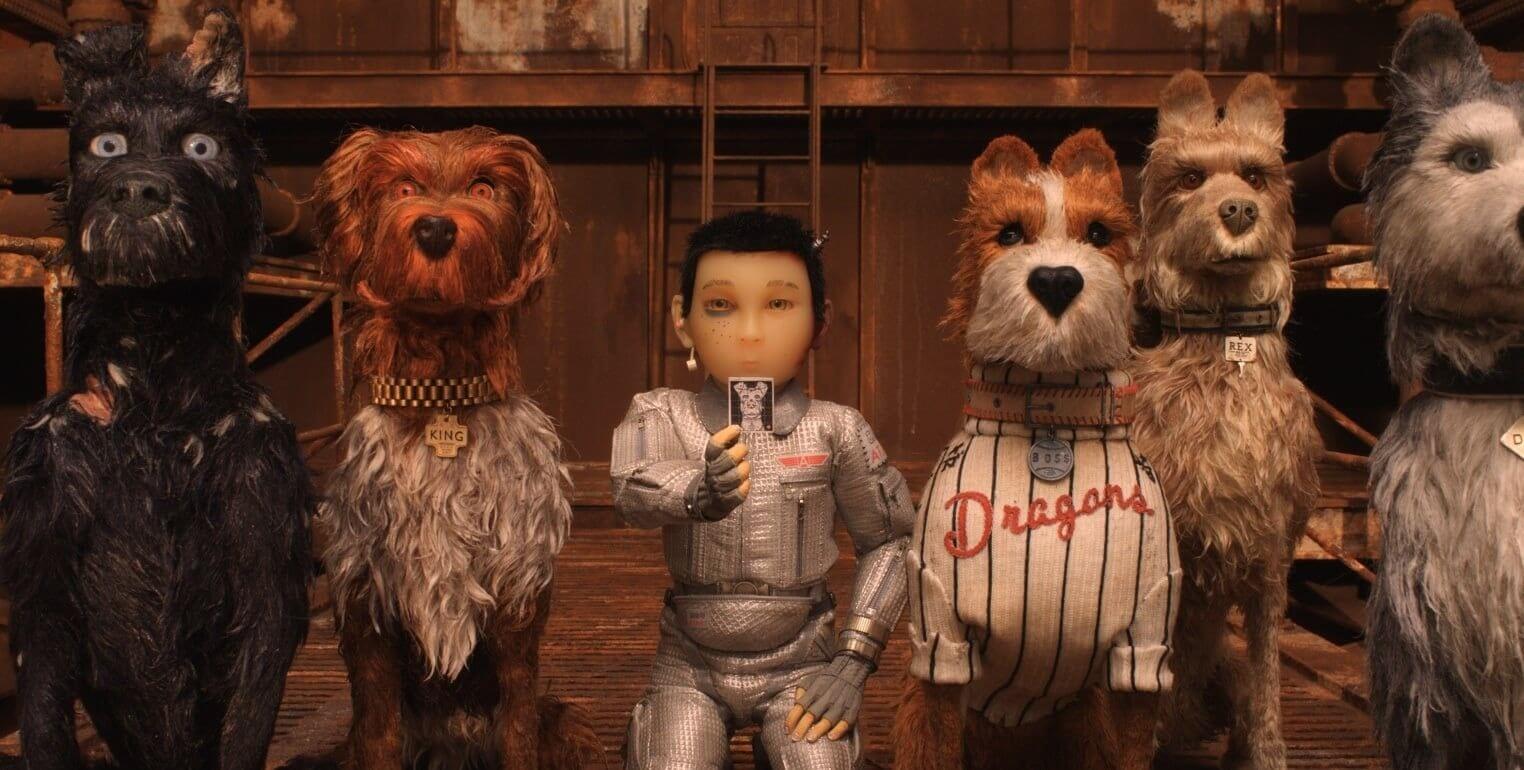Megasaki. Japan. Twenty years in the future. ‘Snout Fever’ has infected dogs across the country forcing Mayor Kobayashi to ship all dogs onto a quarantined island which is known as Trash Island. Spots (pet of Kobayashi’s orphaned nephew Atari) was the first dog to be trialled and sent over to the island, of course, leading Atari on a hunt to find his lost dog. And, in true Wes Anderson style, there will be all sorts of symmetrically-induced shenanigans, a quirky if bombastic orchestral score and a charmingly witty performance from Bill Murray.
Lots of Good Boys: Immediately, we are introduced to striking imagery of Japan before Anderson plunges us into the gorgeously animated Trash Island – surprisingly prettier than it sounds. In the center, a group of pugnacious pooches: Rex (Edward Norton), Duke (Jeff Goldblum), Boss (Bill Murray), King (Bob Balaban), and, the leader of the pack, Chief (Bryan Cranston). Each pup is exquisitely crafted into looking as pristine as possible. The minute details in their fur or eyeline are superbly animated into feeling real (or perhaps, as real as an Anderson film can feel) which effortlessly merges with the chosen aesthetic of the film. Quite simply, Isle of Dogs is extraordinary because of the skill that aided production and the film would not be as acclaimed without the stop-motion stylistics.
I’m more Atari: But, and this is a big but, Isle of Dogs fumbles with the narrative. Often, the film juggles between too many parallel stories which become confusing. And whilst Anderson translates Japanese in a unique fashion, it clutters the screen becoming painfully awkward to dart back and forth between text and imagery. Therefore, finding empathy for the large roster of characters is difficult. And most enjoyment is had through the dog characters and less so for the humans. Their world is more entrancing.
Kurosawa’s Canines: Anderson has stated that his influences for Isle of Dogs lie with Hayao Miyazaki and Akira Kurosawa. The stark visuals of Megasaki city accompanied But, unlike those auteurs, Isle of Dogs has no depth past the visuals and struggles to ‘say’ anything worthwhile. As stated earlier, I found the human characters boring and their actions wildly unmotivated which is disheartening for such an exciting world that is carried by a convoluted story. Similarly, the techniques Anderson uses as replacements for subtitles are excellent – translators and tapestries, for example. Whilst they are distinctive, the narrative moves at such a pace it is difficult to follow reinforcing that this is certainly not a children’s movie.
At Leashed the Music is Good: To match the visuals, the accompanying score is fine-tuned to relay an authentic Japanese style. Many melodies feature an expressive guitar piece whilst others rely on bombastic orchestra – all suited to matching the onscreen elements. Even though Isle of Dogs wasn’t what I expected, I was charmed by it anyways. The sheer perfection of production design is appraisable enough as a cinematic experience. I did, however, feel encumbered by the number of unempathetic characters and somewhat bored of the lackluster narrative (but the actors did bring an element of enthusiasm to the product). Not Anderson’s best but, by far not his weakest.
Great visual design from Anderson and his team.
But if you’re looking for a deeply provocative and engaging story,
you’re barking up the wrong tree.


